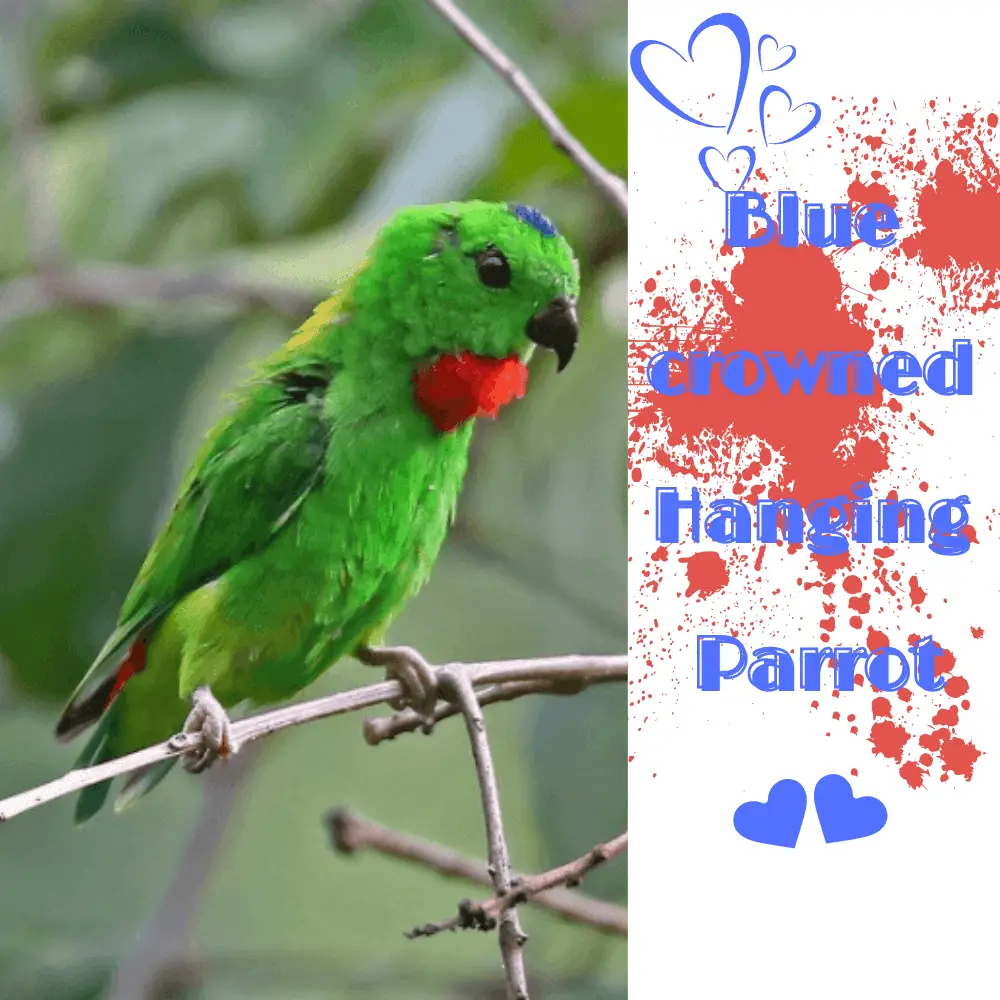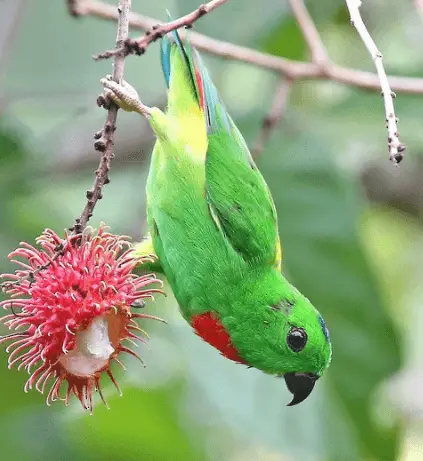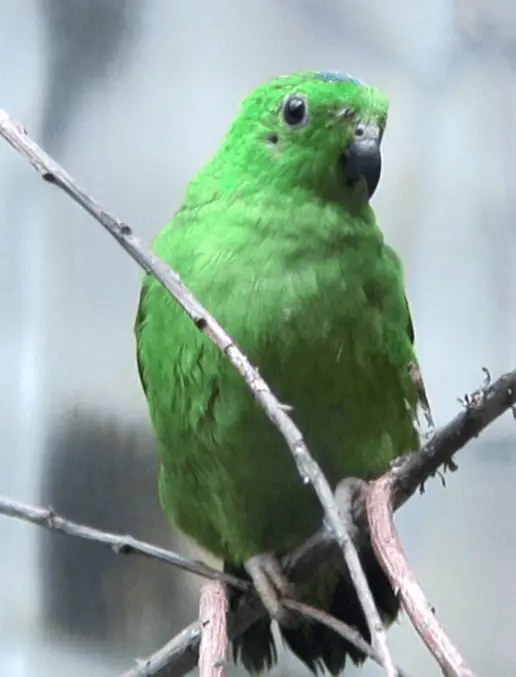
Systematics History
Monotypic.
Subspecies
Monotypic.
Distribution
S Thailand and extreme S Myanmar (Tenasserim), Peninsular Malaysia, Singapore, Sumatra and associated islands (Nias, Mentawai Is), Anambas Is, Riau Archipelago, Bangka, Mendanau Is, Belitung, and Borneo and associated islands (Labuan, Maratua Is). Also, W Java, wherein part introduced.

Habitat
Forest and forest edge, secondary growth, peat swamp and riverine forest, bamboo patches, landward edge of mangroves, beach-strand woodland especially with casuarinas, wooded gardens, coconut groves, plantations, up to 1300 m, exceptionally to 2000 m, in Indonesia up to 500 m; possibly more abundant in selectively logged than primary forest.
Blaukrönchen (Loriculus galgulus) – Blue crowned hanging parrot
SOURCE: maxtc
Movement
Blue crowned Hanging Parrots may move about widely, even ranging between adjacent islands. May trapline around a large communal home range or is truly nomadic.
Diet and Foraging
Few specific records: the fruit of various figs including Ficus caulocarpa, F. virens, F. delosyce, F. pisocarpa, F. kerkenhovenii, F. crassiramea, and F. stupenda, also flowers of Erythrina and durian Durio zibethinus, and mesocarp of oil-palm fruits.

Sounds and Vocal Behavior
Flight Blue crowned Hanging Parrot call a high-pitched “tzeeet” or a doubled “tzee-zeet”, sounding slightly higher-pitched than L. Vernalis. When perched, also utters several squeaky or buzzy warbles and twitters.
blue crowned hanging parrot sings
SOURCE: Bird Jamboree
Breeding
Jan–Aug, possibly later, in Sumatra. Blue crowned Hanging Parrot Nest in hollow in living or dead tree, including dead Oncosperma palms and rubber trees in disturbed forest, 8–12 m up. Eggs 3; in captivity, nestling period c. 5 weeks.
Blue-Crowned Hanging Parrots at San Diego Zoo
SOURCE: San Diego Zoo Kids
Conservation Status

Not globally threatened. CITES II. Very common and widespread throughout the range except for Singapore, where now very uncommon.




















